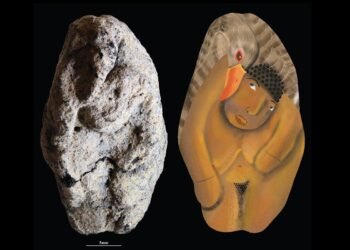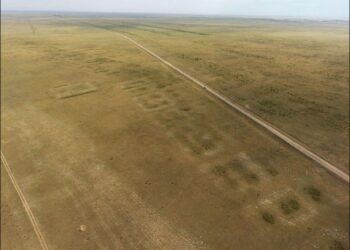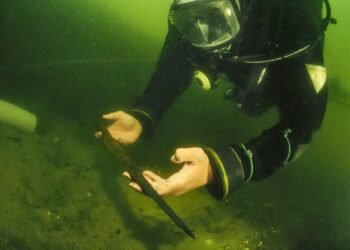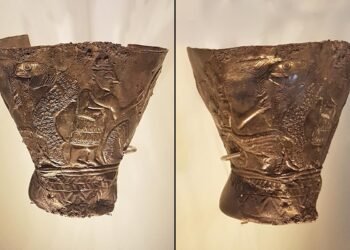In a new study, Ph.D. student Leonie Hoff from the University of Oxford has examined ancient fingerprints left on terracotta figurines to shed light on the age, sex, and working conditions of their creators.
These figurines, recovered from the ancient Egyptian port city of Thonis-Heracleion, date back to the Late and Ptolemaic periods (seventh–second centuries BCE). This research, published in the Oxford Journal of Archaeology, marks only the second time that fingerprint analysis has been applied to ancient Egyptian materials, and it is the first study to apply this method to Late Period/Ptolemaic objects, employing advanced Reflectance Transformation Imaging (RTI) technology.
Thonis-Heracleion, a once-thriving port near the Canopic mouth of the Nile, played a vital role in trade and migration before Alexandria eventually eclipsed it as Egypt’s main harbor. Although rediscovered in the 1990s, much about the daily life of the city’s inhabitants remains unknown due to the limited survival of non-monumental structures and the scarcity of funerary evidence.

Fingerprint analysis on nine of the 60 figurines uncovered from the site revealed intriguing findings. Hoff found that both males and females participated in figurine production, challenging the assumption—rooted in ancient Greek sources—that this was an exclusively male profession. Furthermore, Hoff identified the involvement of children, a finding that surprised her at first. “I was perhaps initially a little surprised to find such clear evidence of children’s involvement,” Hoff stated. “But it actually makes a lot of sense when you consider the hands-on nature of the work and cross-cultural evidence of children working in potteries.”
The process of creating these figurines involved pressing wet clay into molds, which left behind fingerprint impressions. By analyzing ridge density (a characteristic generally denser in female than male fingerprints) and ridge breadth (which correlates with age), Hoff could distinguish the prints of adults and children, as well as between male and female creators. Hoff’s study identified about 14 distinct individuals, though it was not possible to match specific individuals to particular figurines due to the fragmentary nature of the fingerprints and the varying dates of the artifacts. The presence of children’s prints primarily inside the figurines—while adults’ prints were found both inside and outside—suggests that children assisted in tasks like pressing clay into molds, leaving adults to assemble and refine the figurines.
Differences in the training structure also emerged between Egyptian and Greek figurine-making traditions. In Egypt, children were often paired with adults close to their age, while Greek workshops tended to pair young apprentices with much older supervisors. This distinction hints at different cultural approaches to apprenticeship and training in ancient figurine-making.
According to Hoff, this preliminary study on fingerprint evidence not only offers direct access to the individuals who crafted these objects but also highlights broader socio-cultural dynamics within ancient Egyptian society. Hoff hopes that future excavations may yield more terracottas to expand the study.























